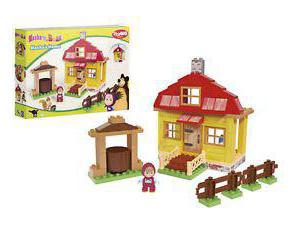Who is the bear-rod?
Bear - this is the largest predator classmammalian animals. He has a fluffy barrel-shaped body, broad, powerful legs with long claws, a huge, lobed head with an extended muzzle and a mouth with large, movable lips.
His ability to deftly climb trees canenvy any athlete. Bears are very different in size, color and habitat. By the way, the range of their habitat is varied, but in most cases the bear is a forest inhabitant.

Dinner is served
Contrary to their impressive size, the clubfootlead a practically herbivorous way of life: they eat berries, cereals, roots, nuts and other vegetable food. Of course, the most favorite delicacy of a bear is honey. The beast will do everything in order to get to it, even endure the attack of ferocious bees. Perhaps the only toed who is true to his predatory way of life is a polar bear. His diet is mainly composed of seals.

Winter dream
In winter, bears fall into suspended animation, or in winterHibernation. This state of deep sleep, accompanied by a significant decrease in body temperature, heart rate and respiration. Hibernation of a bear is a kind of measure of protection of an animal from cold and protracted winters. Some bears make a lair before going on a "winter rest". For example, brown bears do this from different branches and branches, and whites just dig a hole in the snow. Bear, in the winter for one reason or another not asleep, poses a serious danger to humans. Such an animal becomes extremely aggressive and ruthless predator, as winter hunger and cold make themselves felt immediately.

Why is this happening?
Cranks are called those bears that are stillThe fall did not go to sleep because of insufficient accumulated fat. After all, it is the fat supply that allows the predator to fall into a winter sleep for many months, without thinking about fierce frosts and endless hunger. Bear-rods are forced to wander through the forest throughout the winter in search of food. But, as is known, in winter berries, roots and honey do not happen, therefore the only way to survive is hunting, including human consumption. During this period, he attacks anyone who meets him on the road - even his own brothers! Bear-crank, from severe hunger deprived of caution and a sense of danger, makes sorties to villages and villages, where he plows cattle and even breaks into houses to people. He often leaves the forest belt in the city. Fortunately, reports of such animals usually do not keep themselves waiting long, and people, knowing about the danger, are preparing to meet with the beast several hours before his appearance.
How to protect yourself from the attack of the bear-rod
It is best to try to avoid suchmeetings, but, as they say, "would know where you fall ...". Remember that the rules of safe behavior when encountering an ordinary bear do not apply to the connecting rod! The only way to survive after such a meeting, for example, in the forest - is to shoot a predator. Escape from an aggressive beast is almost impossible, at least for two reasons. First, bears, which seem awkward, can easily pick up speed up to 40-60 km per hour at a short distance. Secondly, the bear-rod-bear who is running away from him will easily take it as a prey and even more so will hurry up to overtake and tear it up. It should be noted that not every bear wandering through the winter forest is a connecting rod. Quite often animals are simply disturbed by hunters or loggers. In this case, the disturbed predator, after having spent several days in the forest, finds another place for hibernation.

Statistics - a stubborn thing
It is interesting that in Eastern Siberia, approximately once inFor 10 years a cedar crop failure has occurred. That's when the so-called "bear year" comes in when the connecting rods start terrorizing the local population. But for the European part of Russia the bear-rod is an exceptional rarity, because plant food on these lands is much larger, which almost always excludes the possibility of crop failure.
</ p>>







